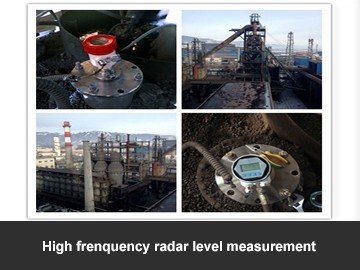Advantages of high frequency radar level measurement
High frequency radar level measurement is more and more popular now. Because radar level gauges have become mainstream products on the market, mainly divided into pulse radar level gauges and guided wave radar level gauges. Although the low-frequency pulse radar level meter has the advantage of relatively low price, it is a gradually eliminated product in the main application field. Compared with low-frequency pulse radar level gauges, high-frequency radar level gauges have incomparable advantages in the application process.
High-frequency radar level measurement is generally a radar level meter that operates in the K-band (24-26GH2). The higher the operating frequency of the radar, the shorter the length of its electromagnetic waves, and the easier it is to reflect better on inclined solid surfaces. The narrow beam width can effectively avoid obstacles, and the high frequency also allows the radar to use smaller antennas. Therefore, the high frequency radar in solid measurement can provide accurate and reliable measurement, and also has good applications in media such as PP powder and PE powder in the chemical industry.
High-frequency radar level measurement used in solid silos, especially for silos filled with dust and disturbance within 50/100 meters. Related technology instruments, such as capacitors or guided wave radar TDR, are subject to a strong tension load when the material level drops during discharging, which may damage the instrument or pull the top down. Heavy hammers often have the problem of burying them. It requires frequent maintenance, so does most other mechanical meters. High dust conditions may exceed the capabilities of non-contact ultrasonic level measurement systems. High-frequency FM radar technology is particularly suitable for level measurement of such large national silos.






